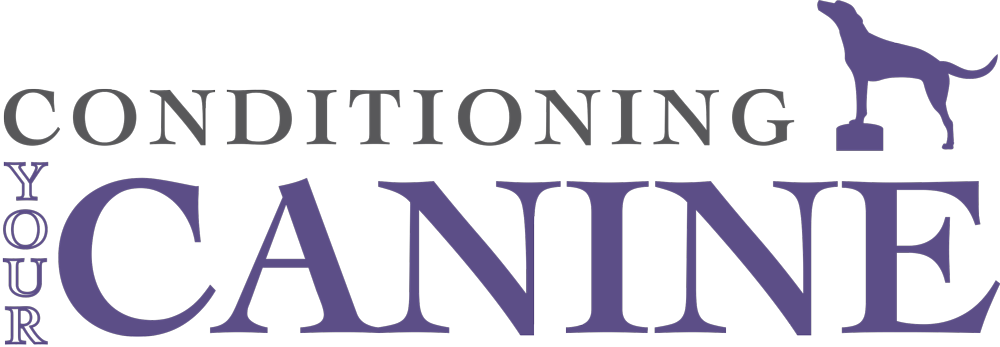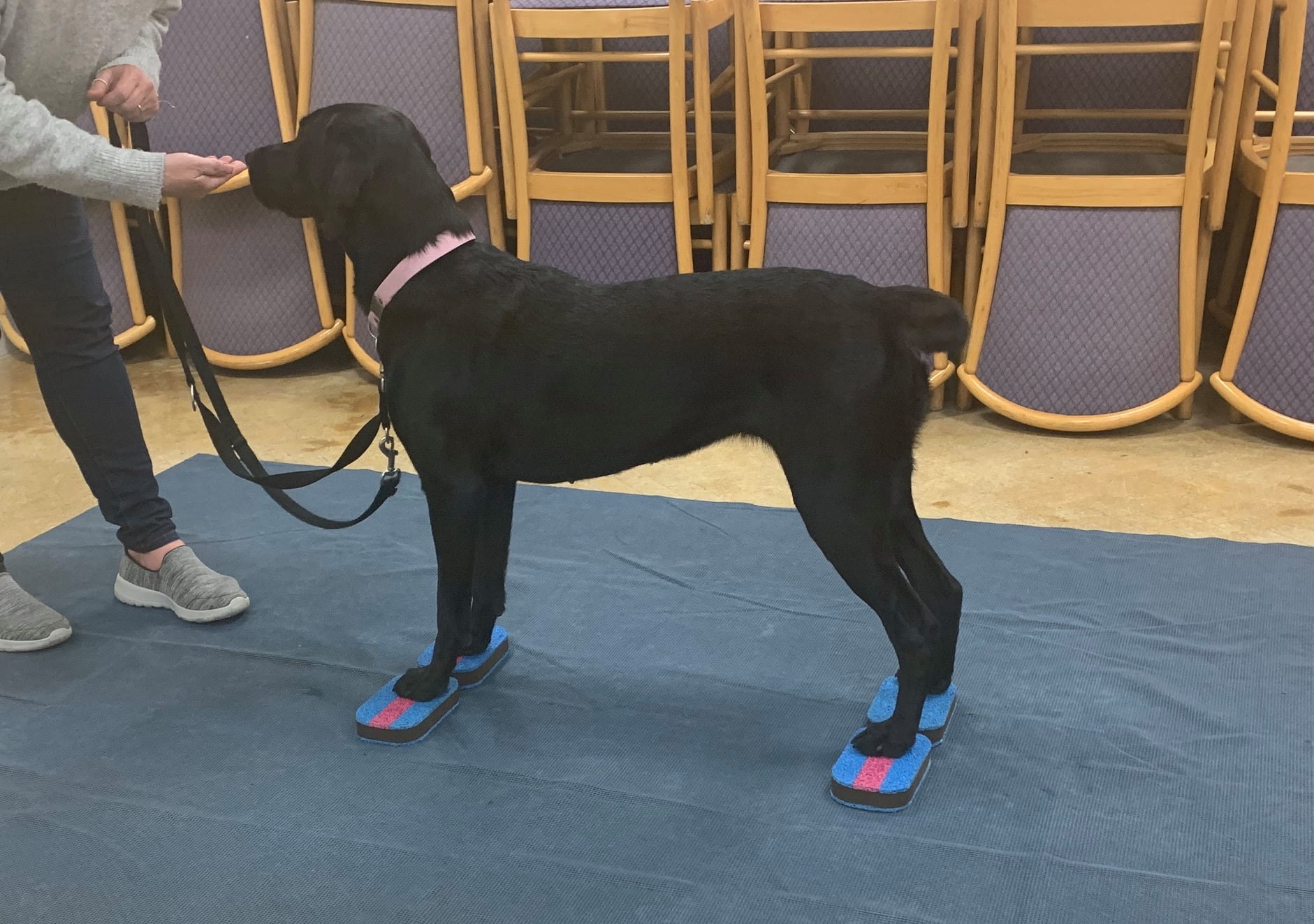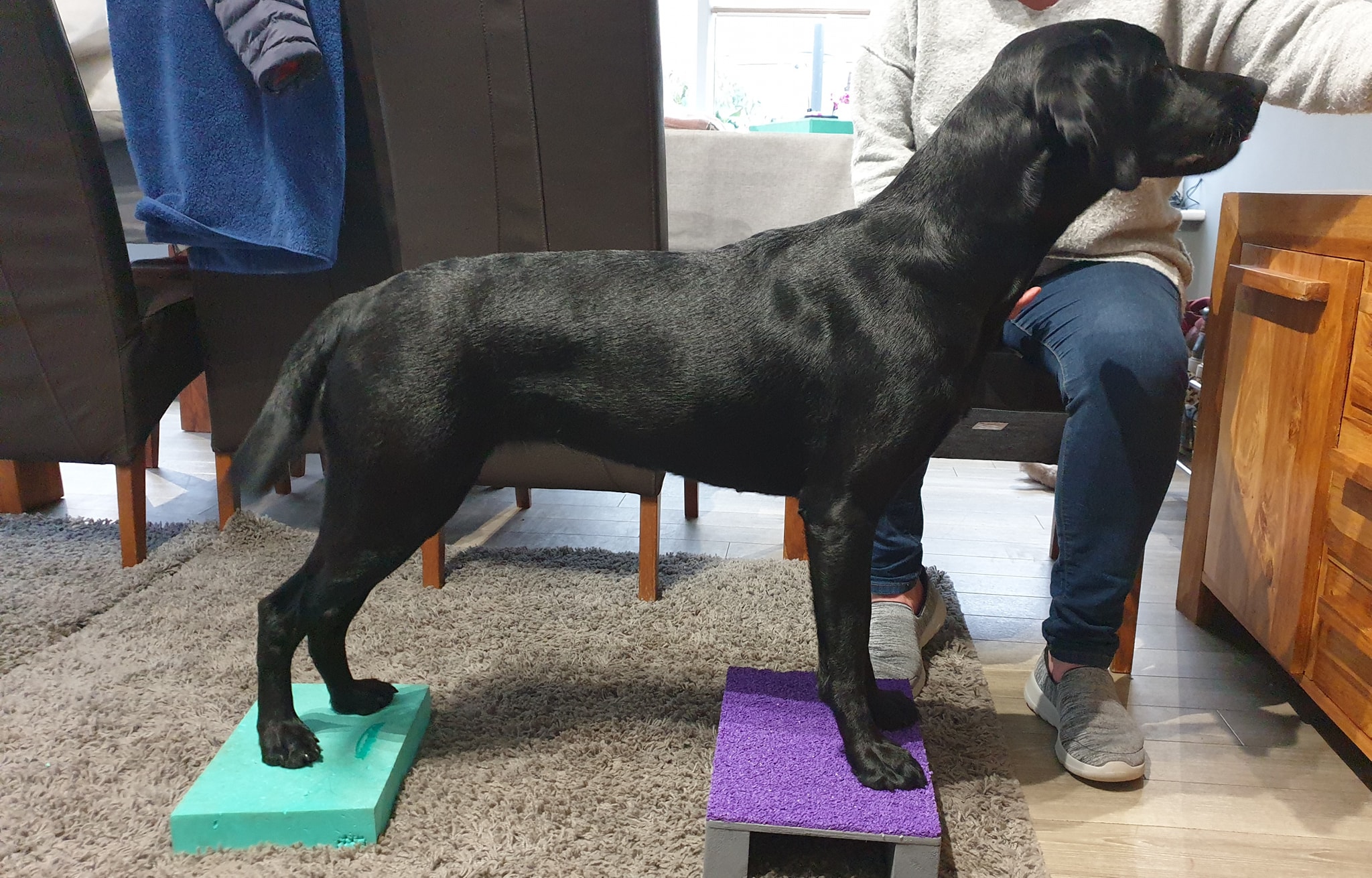At a quick glance this dog is in good form, however on closer inspection you can see the head is too high, there is a dip in the T7/T8 region, the pelvis looks higher than the shoulder with a slight caudal weight shift. This is mainly caused by incorrect reward placement.
This poor posture causes physiological changes over time leading to overall unbalanced posture. These physiological changes (as seen in the photo) include:
• Shortening of the neck musculature
• Shortening of the dorsal thoracic girdle musculature
• Kyphosis in the lumbar region
• Flaccid abdominal and oblique musculature
• Subtle caudal weight shift
So how do we fix this? By using reward placement, we can change this dog’s posture to:
• Activate the ventral thoracic girdle musculature
• Activate the paraspinals, abdominals and obliques
• Activate the pelvic limb caudal chain musculature
To enable the dog to do this the therapist/owner can do one or more of the following tips:
• Lure the dog forward slightly
• Lower the nose slightly
• Mark and reward this new posture
• Use a pot of treats at an appropriate height for the dog to stare at in anticipation of the reward
• Use a large mirror to help the owner see what is right and what is wrong, as it is almost impossible for the owner to see this whilst standing in front of their dog
• Increase the height of the thoracic limb foot target
Canine conditioning is a partnership between the dog and handler. The handler can teach the dog the task (standing on foot targets), however they may need your assistance (the therapist) to ensure the reward placement leads to improved neuromuscular pathways, increased proprioception, balanced musculature and therefore correct posture.
Conditioning Your Canine can help you and your clients achieve all of the above with:
• The Foundations Document
• The Benefit Slides
• The Training Tips
• Intelligent search suggestions e.g. areas of the body, equipment, movement patterns


